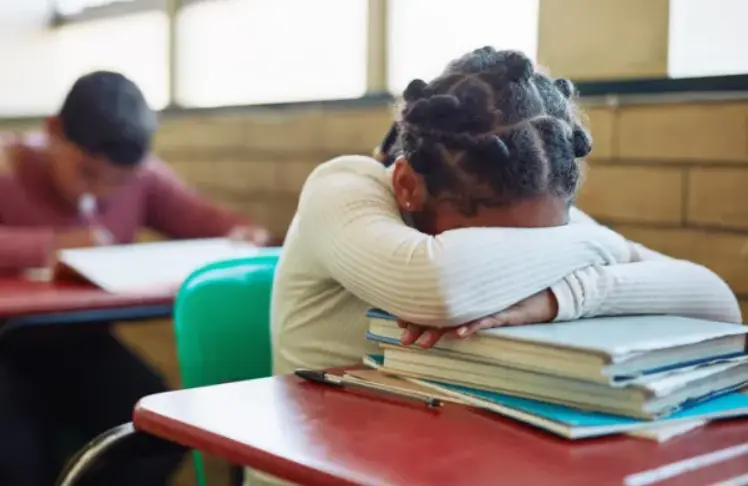
It’s considered a truism in most Black communities: education is the key to climbing the ladder from poverty into the middle class. But a new survey of teachers has found that teaching kids struggling with poverty is one of the biggest hurdles they face in the classroom each day.
In its survey of teachers nationwide, the Pew Research Center found that 53% think poverty is a major problem among students who attend their school. It was the top concern for educators, ahead of absenteeism, mental health, drug use, and gang violence.
While impoverished students have always been an issue, particularly at under-resourced, majority-Black schools, experts say the problem is affecting rural as well as suburban schools, and it has become more acute after the COVID-19 pandemic. But it hits hardest at urban schools, which typically have the highest concentration of Black students, according to the survey.
“Poverty cuts across the urban-rural divide, with roughly equal shares of teachers in urban schools (62%) and rural schools (60%) saying this is a major problem among their students,” according to the Pew survey, released earlier this month. “In suburban schools, a smaller share of teachers (42%) say the same.”
And it matters because students mired in poverty are more likely to have other serious issues at school, including absenteeism, disruptive behavior, poor academic performance, depression, and other mental health challenges.
Prudence Carter, a Brown University sociologist who specializes in education issues, says that it should be no surprise that poverty is teachers’ top concern. The issue, she says, can sweep in nearly every aspect of a student’s life — from not having enough food at home to not having a home at all.
“Poverty affects children in terms of food. Hungry children have a harder time learning,” Carter says. “Unhoused children have a harder time learning because of the overall social, psychological, and emotional toll” of not having a permanent, stable home.
At the same time, “Many children who live in poverty, of course, also end up being ‘in loco parentis,’” looking after younger siblings if a parent is absent or at work, Carter says. “We know from research that children who grow up in poverty don’t have proper health care. That can have a significant impact on everything,” including delays in speech and language development.
“If you look across the social sciences at the research on the correlations between poverty and cognitive development, you see just lots of massive adverse effects for poor children,” Carter says.
Poverty is generally defined as not having enough money in a household to meet basic needs, including food and shelter. The federal government has set the national poverty level at $31,000 a year for a household of four.
According to the US Census Bureau, the median student poverty rate for children in all U.S. school districts in 2021 was 14.5%, though in some areas, it is as high as 1 in 4 students.
According to a report from the National Association of Secondary School Principals, roughly one-fifth of all students in K-12 schools nationwide “are either living in poverty, attending a high-poverty school, or both.” It manifests itself, the report states, in “a variety of different factors that are often symptoms of poverty, like health issues stemming from a non-nutritional diet, homelessness, lack of food, or the inability to receive medical treatment for illnesses.”
Those factors “often place more stress on a student, which can negatively impact the student’s ability to succeed in a school,” according to the report.
While poor students face more hurdles to academic success, Carter says it’s important to remember that they can succeed with proper encouragement and support.
“This is why it’s really important for programs to be in place in school,” including free or reduced-price meals and after-school programs, she says. “Oftentimes, these children also need extra school support with learning aids. If poor kids are exposed to such programs, they can be academically successful and economically mobile as a result.”
Ultimately, “poverty doesn’t necessarily mean it’s 100% that students can’t thrive, particularly if resources can be put in place to supplement,” says Carter. “But it is highly more likely that children who don’t have access to resources will fall further behind.”















